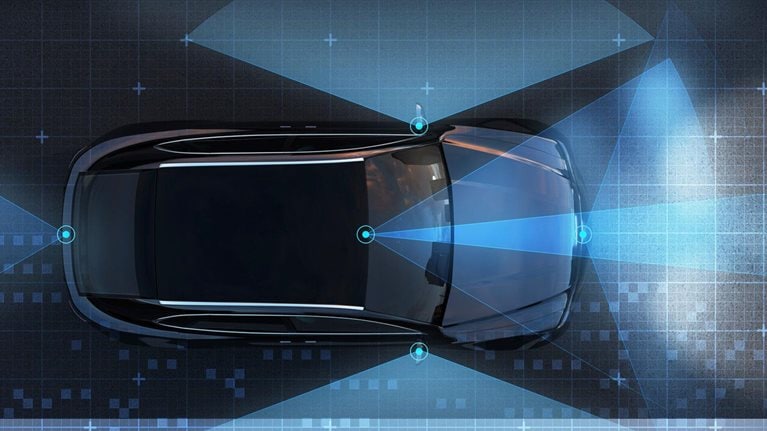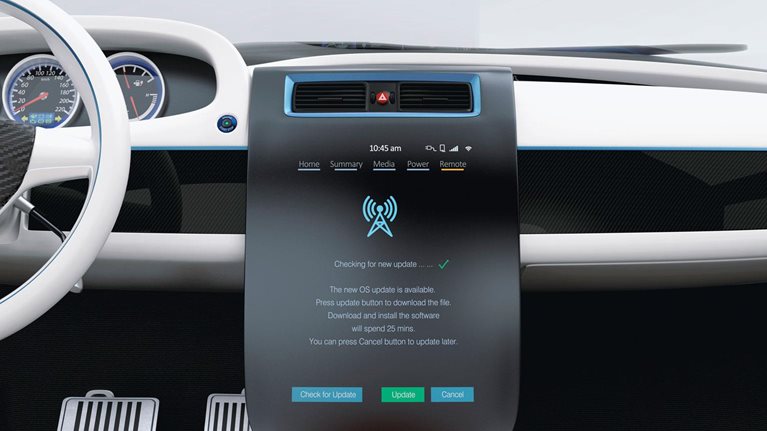For the global automotive industry, connected cars are the future. In McKinsey’s 2023 Global Automotive Connectivity Executive Survey, 55 percent of auto executives ranked connected cars—vehicles using connectivity and digital features to provide a superior mobility experience—as one of the top two trends shaping the future of mobility (second only to electrification).1
Customers, too, are increasingly excited. Across the globe, half say they would consider switching to a different car brand that offered smarter, better-performing in-car features, up from about 20 percent in 2014 (Exhibit 1).2 In addition, a vast majority of electric-vehicle (EV) buyers expect to increase their use of connectivity solutions in the future (Exhibit 2).


Yet, despite this customer demand and the considerable growth opportunities for connected vehicles, the automotive industry’s offerings remain in their infancy, and many players have yet to develop successful business models at scale. Only 17 percent of customers say they are satisfied with current in-car features. Pain points include unnecessary and complicated features and concerns about driver distraction, with 22 percent indicating they don’t see any value on top of what their smartphone already provides (Exhibit 3).3

With several trends expected to drive adoption of connected cars, automotive players have an opportunity to capture the moment by positioning connectivity as a catalyst for long-term growth and profitability. In this article, we explore these trends and address some of the key challenges holding automotive companies back from delivering on customer expectations and from capturing connectivity’s inherent value opportunities. We also propose business building as an effective way to overcome these roadblocks.
Three megatrends that will reshape the demand curve
Today, more than half of new cars sold globally offer some level of connectivity.4 Most of these features, however, are reactive and simple, allowing drivers to do things such as track their vehicle use and monitor basic technical status. Among the five levels of vehicle connectivity identified by McKinsey, these current features represent level one.5 This is about to change. By 2030, 95 percent of new vehicles sold globally will be connected, with 12 percent of these equipped with level three or level four autonomous-driving capabilities (compared with 1 percent in 2025).
Three broad trends are expected to drive adoption of connected cars and spur innovation in higher-level features:
-
Autonomous driving. The ability to partially (or completely) disengage from driving will give drivers more time to engage with in-vehicle technologies for work and productivity and for entertainment. According to recently updated McKinsey Center for Future Mobility (MCFM) forecasts, 64 percent of cars sold globally will have at least advanced driving assistance (SAE [Society of Automotive Engineers] Levels 2 and above) by 2030.6
-
Generative artificial intelligence (gen AI). McKinsey’s latest research forecasts that gen AI will become so integral to our lives that it could boost annual global productivity by $2.6 trillion to $4.4 trillion annually.7 The days of puzzling voice assistants or limited access to information are numbered. Automotive gen AI will radically change the way customers interact with their cars.
-
Social media. With more than 4.9 billion users globally, social media apps have become the primary channel of communication and social interaction for so many.8 This desire to share and consume social content doesn’t stop when people get into their cars. We expect better integration of social features in vehicles (through voice, video, etcetera) to significantly boost connectivity demand.
Connectivity is enabling new use cases with true customer value
Previous MCFM research has identified a total of nine different connectivity use case clusters that will generate new opportunities for automotive players to add customer value and monetizing this value.9 Connected cars offer automakers significant potential to develop new business models, such as subscription services, and to generate cost savings.
Consider the following two use cases, both with monetization potential that is yet to be fully captured by most automakers:
-
Seamless in-car experiences. As gen AI becomes ubiquitous, customers will expect experiences enabled by this technology in their cars, notably gen AI capabilities added to a voice assistant. Customers will be able to ask their vehicle almost anything—from the best routing and best restaurants to visit at a particular destination to background information on sights along the way. Consider the following example:
A woman gets into her car and is welcomed by her gen AI–supported voice assistant. The assistant asks where it can take her. She replies that she would like to drive to her parents’ house; along the way, she wants to stop at a vegan restaurant where she can also charge her car—but she doesn’t want to spend more than €15 on a main course.
The voice assistant already knows where the woman’s parents live and optimizes the route for the best-rated vegan restaurant that also has a changing station nearby. Along the way, the woman uses the voice assistant to draft some work emails and sort out next week’s calendar.
In such a scenario, several monetization models are possible. In a B2B model, an OEM could, for example, partner with an EV-charging provider, restaurant, or entertainment company that pays to be recommended to drivers and passengers. In B2C models, the activation of a gen AI voice assistant could be offered in a connectivity package (for example, as a subscription).
-
Vehicle health monitoring. In addition to providing drivers with access to vast amounts of useful information, connected cars will gather data on their own operation. This collection and aggregation of large amounts of vehicle data (for instance, sensor-based telematics, geolocation data, or driver behavior) can help customers extend the life of their vehicle, boost its operational efficiency, and save money on repairs. A dashboard, for instance, could alert drivers to how many more kilometers of driving are left before brake pads or fluids need to be replaced and then could provide options for easy ordering of these parts and convenient scheduling of service appointments. The following scenario provides an example:
A vehicle’s gen AI assistant warns a woman that the car’s indicators have shown that she most likely needs to replace the vehicle’s brake pads within the next 14 days. It then provides her with a list of nearby service points with available time slots in the next two weeks.
She is relieved because the warning came prior to an upcoming road trip. The vehicle suggests a few service points nearby that have the right brake pads for her make and model and that also have appointments on Friday. (Behind the scenes, the vehicle, the OEM, and the service point’s part and appointment availability databases are connected). The woman asks the assistant to select a nearby shop with a good rating and to schedule an appointment, taking less than one minute of her time.
Similar monetization options apply here. In freemium subscription models, free standard offerings (for example, monitoring of components) could be supplemented with paid premium offerings such as additional analyses (for instance, feedback regarding driving patterns). Automakers could also implement commission-based models, with fees charged to partner companies, such as insurance providers or workshop owners, for each customer referred. For business customers that operate fleets of vehicles, performance-based models could deliver compensation based on reduced downtime for the fleet.
Connectivity has yet to reach its full (monetary) potential
Although many global automotive players understand the value of these and other use cases and have set ambitious 2030 connectivity revenue targets (for example, GM is targeting annual revenues of $20 billion to $25 billion for software-enabled sales and services10), most have struggled to build successful, scaled offerings. These efforts have fallen short for a variety of reasons, but in our latest Global Automotive Connectivity Executive Survey, three challenges emerged as the most prominent (Exhibit 4).

1. Making the business case profitable. Sixty percent of executives reported this as a main challenge preventing their organizations from unlocking the full value of connectivity. The crux of the problem lies in automakers’ struggle to generate customer adoption and communicate the value of connected products and services. In addition, many organizations have faced issues finding the right monetization models for these offerings (Exhibit 5).

The head of connectivity at a supercar OEM said, “We intuitively understood that a segment of our customers expected more ‘digital engagement’ to enjoy their ‘supercar experience,’ but the issue has always been to quantify the differential value of that experience. Our organization could easily quantify ‘value per HP,’ but not the ‘value per improved onboard engagement.’”
2. Solving technology hurdles. Technological challenges—cited by 45 percent of executives as a significant hinderance—stem from the high degree of complexity inherent to the development and implementation of connectivity services. Efforts such as developing offerings adaptable to future technologies and achieving compatibility across different vehicle models and generations often require very specialized capabilities, which are difficult to build in-house due to limited OEM experience. Developing and supporting a gen AI–powered personal assistant, for instance, requires advanced natural-language processing and machine learning, as well as the maintenance of a robust computational infrastructure. Providing predictive-maintenance solutions means having capabilities in real-time advanced data analysis, predictive modeling, and integration of data from external sources. Finally, developing applications that can be used across the heterogeneous landscape of vehicle models and supplier platforms requires architectures that are more vertically integrated (Exhibit 6).

The head of technical partnerships at a motorsport player said, “We simply don’t have the capabilities in-house to develop and deploy connected and digital technologies. As technology accelerates, frankly it requires an increasing amount of talent even for setting the requirements.”
3. Generating customer awareness and interest. Thirty-four percent of executives identified customer interest as a challenge, with several factors driving the issue, including the excessive complexity of the technology, lack of a structured value proposition across customer touchpoints, limited customer demonstrations and hands-on experience, and perceived cybersecurity risks (Exhibit 7).

The head of connectivity services and digital at a leading mainstream OEM said, “There are still significant barriers in reaching the final customer. Part of customers’ dissatisfaction with their connected services is due to a lack of clear explanations and use demos by our dealer personnel. There is indeed still a significant portion of our car buyers who don’t start using services once they get their new car and simply neglect to engage with the platform .... AI and vocal ‘virtual assistants’ might play the ‘digital coach’ role for our customers in the future.”
Business building as an effective solution to unlock value
Tackling so many new challenges at once can be difficult, if not impossible, within a large legacy organization. We’ve seen companies across industries and geographies—including the automotive connectivity field—overcome these hurdles by building these new services as a business separate from the broader organization and then letting it operate much like a tech start-up.
This approach has been successfully applied in companies across industries and geographies. In Switzerland, Sunrise Communications launched Yallo as a low-cost, digital-attacker mobile, internet, and TV brand that pursued aggressive growth through digital offers and digital marketing. In China, a leading global bank launched a digital-hybrid business that focuses on financial planning and uses social media to connect with customers.11
Within the automotive industry, only a handful of companies have thus far successfully leveraged business building to launch new revenue streams. BrightDrop, a start-up subsidiary of General Motors, created a connected electric delivery van with an integrated software platform for last-mile fulfilment and logistics.12 BrightDrop’s van was the fastest vehicle to launch in GM’s history—only 20 months from conception to first customer delivery—and the venture is on track to reach $1 billion in revenue in 2023.
Similarly, Woven by Toyota can move quickly and at lower cost to develop its automated driving and advanced driver-assistance systems, as well as Arene, its vehicle software operating system and platform. Woven also has the latitude to pursue the ambitious aim of creating a test environment for connected mobility called Woven City.
A growing ecosystem of automotive-connectivity start-ups has demonstrated the value of customer centricity, agile ways of working, early value capture, and other key practices of business building (Exhibit 8). Founded in 2015 as a joint venture between Alibaba and Shanghai Automotive (SAIC), Banma provides smart mobility solutions through an integrated platform that seamlessly connects vehicles with cloud-based services, with an installed base of more than one million operating systems. Upstream, an Israeli start-up founded in 2017, helps to secure more than 20 million connected vehicles with cybersecurity software and real-time monitoring solutions. Haas Safety Cloud connects first responders, recovery fleets, and road workers through cloud-based vehicle-to-vehicle (V2V) communication, facilitating more than two billion digital alerts since its launch in 2015.

Several key practices define value creation in both successful corporate business builds and start-up ventures:
-
Cross-functional teams. Give teams the freedom to act as entrepreneurs with their own processes and organizational structures, clearly separated from the existing core organization, with a focus on experimentation and fast learning.
-
An investor’s view. Evaluate investments from an investor’s perspective and allocate funding based on stage gate delivery instead of fixed return horizons.
-
Deep user understanding. Develop products in an agile way. New products are launched after deep user research and are typically unfinished; they are then quickly optimized and iterated based on user feedback. This approach is completely different from most automotive development processes.
-
Data as a product. Focus sufficient time and resources on data models and architecture, and establish clear accountability for data (quality, security patterns, availability, and performance).
-
Open innovation. Be the orchestrator, and actively build structures for innovation, but let different stakeholders bring the instruments (for example, applications or services).
-
Freedom to operate. To attract the best talent, use the latest technology and experiment with business models and features in a more risk-balanced environment.
For automotive executives, building distinct businesses can help solve the primary challenges mentioned earlier that have prevented them from successfully executing on their connectivity ambitions.
First, a separate venture can adopt an entrepreneurial mindset that embraces customer centricity and agile ways of working. For instance, new products can be developed after extensive user research and launched as minimum viable products (MVPs), with features then quickly refined and iterated on based on customer feedback—an approach very different from most automotive development processes. As a result, the business-building ventures can develop clear value propositions that resonate with customers and that can be successfully monetized. Leveraging agile ways of working for faster iteration and building solutions without being constrained by established processes can significantly drive down development costs and drive up customer acceptance and willingness to pay, making the business profitable more quickly and more sustainably.
Second, a new venture that operates independently from the core organization can cultivate a culture that will attract tech talent accustomed to launching and iterating products quickly and in a customer-centric manner. These individuals typically seek greater autonomy and responsibility, free from the slow pace that often comes from the rigid decision-making processes in larger corporate settings. The new talent pool also favors compensation linked to enterprise value creation, which is commonly found in start-up and business-building environments. Independent ventures can also operate in a very different tech landscape. Corporate projects often struggle with lengthy IT processes and strict rules about which tech architectures, tools, and development partners to use. Strict data-sharing guidelines and limited use of existing data sources further limit value creation potential. Ventures, on the other hand, have the latitude to build their own fit-for-purpose tech stack and work with the data sources, solutions, and partners they feel to be the best fit. These are not necessarily the long-term partner of the parent company and are often start-ups themselves). This different talent pool and the freedom to create new processes combine to help overcome technology hurdles.
Finally, OEMs and other automotive-ecosystem players have mastered the art of spending years developing and perfecting a product, pushing it through SOP (start of production), and then selling it to dealers and customers. Connectivity features, however, require entirely different tools and skill sets since these products are not fixed and require continual evolution to help sustain awareness, interest, engagement, and value capture over a longer period. Building the necessary skills in marketing, pricing, and customer journey optimization can be difficult to do in a large organization. Launching a new business with experts in these fields can go a long way toward driving customer awareness, interest, engagement, and retention over prolonged periods.
The action imperative
Connectivity services are becoming an integral part of today’s vehicles, with customers increasingly basing their purchase decisions on the performance of such features. Compared to traditional OEM development processes with long and relatively inflexible development cycles, the new reality requires automakers to rethink their approach to developing connectivity offerings.
Overcoming the three main challenges described in this article should be a priority for players across the ecosystem that want to sustain and grow customer interest using attractive automotive-connectivity solutions. Building a separate business to develop and offer these services allows companies to leap forward with speed, agility, creativity, and a customer-centric mindset, ultimately leading to better value capture. This can help drive growth, even in volatile times.13
With various established players and start-ups already exploring diverse use cases and connectivity offerings, swift action is essential to avoid falling behind. Organizations that move decisively to secure the opportunity in connectivity have a significantly higher chance to expand their business, achieve a sustainable competitive advantage, and boost profitability.
McKinsey on business building
With more than 3,000 experts and more than 500 business builds in recent years, Leap by McKinsey provides an unrivaled offering to assist organizations in the successful creation of new ventures.14


